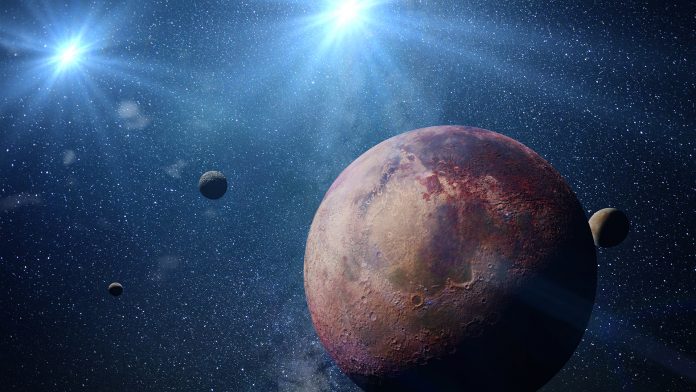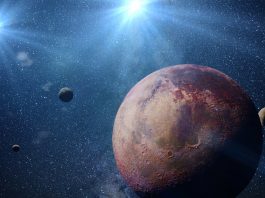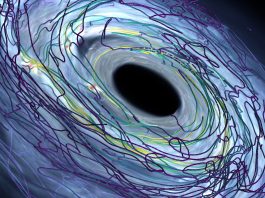A team of astronomers have conducted a novel study to discover information about exoplanets, analysing their once overlooked nightside radio signals.
The research team, led by Anthony Sciola from Rice University, launched an investigation into a previously disregarded aspect of an exoplanets’ magnetosphere activity – their nightside radio signals – with new findings potentially revealing valuable information about exoplanets, such as their habitability and evolution.
The research is published in The Astrophysical Journal.
Currently, detecting radio signals from far-away solar systems is unattainable due to lacking the technological advancements to do so, with this elusive data possibly providing crucial information about the characteristics of distant planets, building our understanding of the Universe around us, and even how we came into existence. Nevertheless, this neoteric study has developed a method for determining which exoplanets have a higher probability of producing detectable signals, taking us one step closer to unearthing information about exoplanets.
The researchers identified that although the radio emissions from the dayside of exoplanets were shown to max out during periods of high solar activity, the signal was considerably aided by those emitted by the nightside. This is particularly captivating because the strength of a planet’s magnetosphere indicates how strong its protection is from the solar wind produced by its star, similar to how the Earth’s magnetic field shields us from the Sun.
For planets that are situated in the Goldilocks zone of a star – where conditions are just right for sustaining life as we know it – it is understood that a strong magnetosphere is required to give rise to life; otherwise, it would be deemed uninhabitable. However, the magnetosphere of the Earth is not actually a sphere; instead, it is a comet-shaped array of field lines that compress against the dayside of the planet, trailing off into space on the nightside, leaving an aftermath of eddies – particularly during coronal mass ejections. Each planet’s magnetosphere produces radio waves, with these signals growing stronger the closer the planet gets to its star.
Building on the Radiometric Bode’s Law
Through the utilisation of the Radiometric Bode’s Law – a tool used to determine a linear relationship between the solar wind and radio emissions from planets obstructing it – astrophysicists have built a conclusive understanding of our solar system’s magnetospheres, although the law has failed to work successfully on exoplanetary systems.

Frank Toffoletto, the co-author of the study and space plasma physicist, said: “The community has used this rule-of-thumb, empirical models, based on what we know about the solar system, but it’s kind of averaged and smoothed out. A dynamic model that includes all this spiky behaviour could imply the signal is actually much larger than these old models suggest. Anthony is taking this and pushing it to its limits to understand how signals from exoplanets could be detected.”
The researchers signified that the current model heavily relies on predicted emissions from an exoplanet’s polar region – just like an aurora on Earth. Their alternative approach applied a numerical model to those estimates to achieve a more comprehensive understanding of the exoplanets entire emissions, discovering that nightside emissions are not entirely produced from one large spot, like north pole auroras, but instead from multiple parts of the magnetosphere, increasing the exoplanets emissions by at least an order of magnitude.
Sciola said: “They’re very small-scale and occur sporadically, but when you sum them all up, they can have a great effect; you need a numerical model to resolve those events. We’re essentially confirming the analytic model for more extreme exoplanet simulations but adding extra detail. The takeaway is that we’re bringing further attention to the current model’s limiting factors but saying that under certain situations, you can get more emissions than that limiting factor suggests.”
A model designed for discovering information about exoplanets
The researchers indicated that their new numerical model is best suited to work on exoplanetary systems. Sciola explained: “You need to be really far away to see the effect. It’s hard to tell what’s going on in the global scale on Earth; it’s like trying to watch a movie by sitting right next to the screen. You’re only getting a little patch of it. Earth’s ionosphere blocks them. That means we can’t even see Earth’s own radio emission from the ground, even though it’s so close.”
In order to accurately detect signal information about exoplanets, there would need to be the development of an array of specially designed satellites, perhaps on the far side of the moon – an area where detection would not be limited by the ionosphere and atmosphere of the Earth, with the position of the observer in relation to the exoplanet also being critical.
“The emission is beamed; it’s like a lighthouse. You can see the light if you are in line with the beam, but not if you are directly above the lighthouse. So having a better understanding of the expected angle of the signal will help observers determine if they are in line to observe it for a particular exoplanet.”









